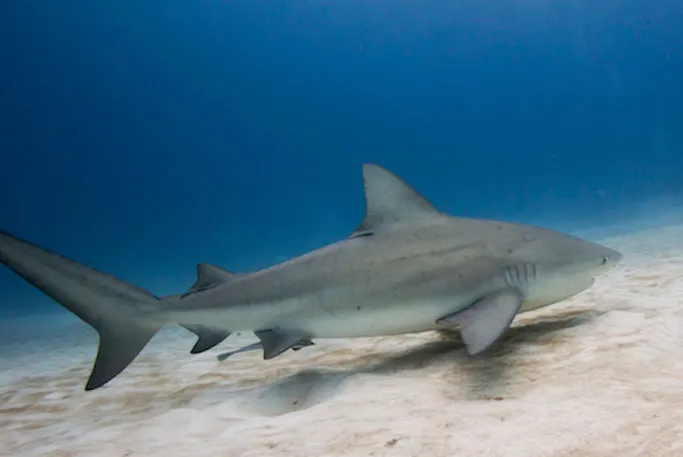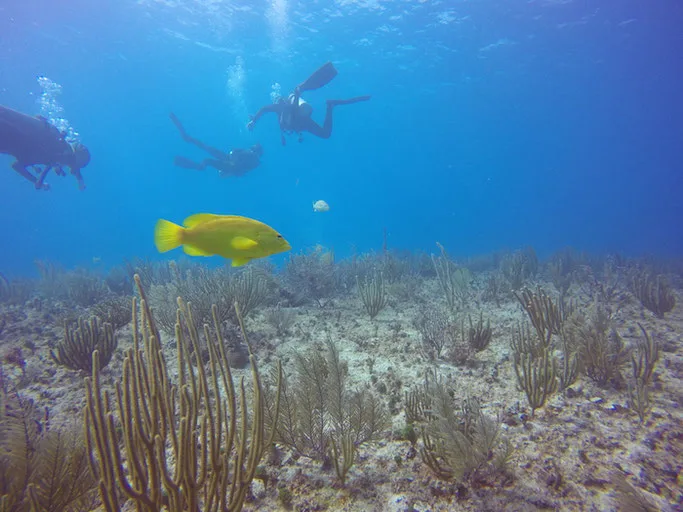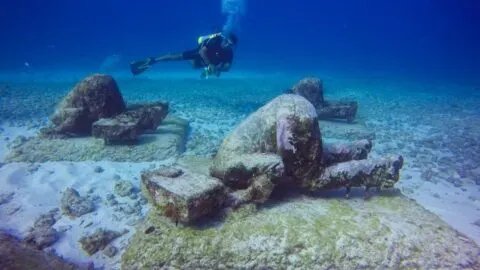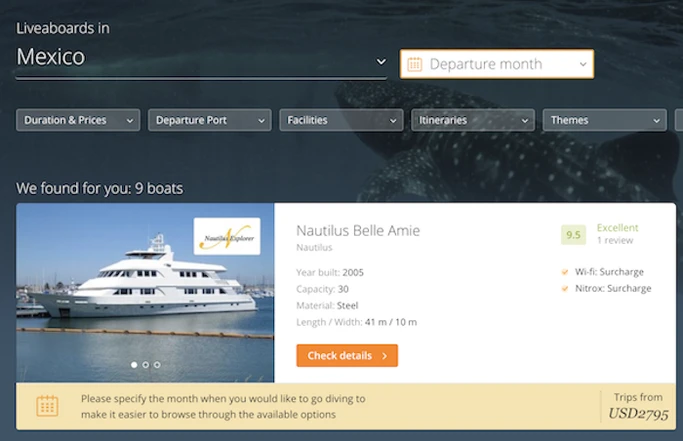Sun all year round, positive, Caribbean vibes, endless possibilities to dive and to get certified… this is Mexico – specifically our favourite dive destination; Yucatán. A diverse destination for divers that one single trip won’t cover all – to be honest we even think its worth looking at apartment rentals in Mexico and staying and diving for a good few week! So, you wonder: what dive sites are the best, what are Cenotes and why should I even bother going? GTS hears you, and here’s our guide to diving Yucatán in Mexico:
Scuba Diving in Yucatán
Are you looking for a lot of different dive sites, some that can only be found once in this world? From the caves and caverns to wrecks, underwater museums, all to way to bull sharks and some of the best coral gardens you’ll ever find: Yucatán won’t disappoint!
Best Dive Sites in Yucatán

Cenotes
The term originates from the Mayan and means hole with water. Cenotes are natural sinkholes that are spread all over the Yucatán peninsula. All Cenotes are connected somehow by tiny passages and eventually connect to the ocean as well. Some are really hard to get to since they are in the middle of the jungle. Which makes getting to the remote ones an adventure of its own.
Divers from all over the world come to dive this magical underworld. The Pit is definitely one of the most popular ones, because of its big straight structure that connects to caverns. Many dive shops will take you to Dos Ojos (means Two Eyes) as it’s a great place for getting used to this overhead environment. One of our favourites is the rather spooky Cenote Angelita. A cloudlike sulphur layer at approximately 28 meters, some old branches, trunks and rocks would make this the perfect dive for Halloween.
Isla Mujeres & Cancun | MUSA Underwater Museum
The Museo Subacuatico de Arte – short MUSA – is located between Isla Mujeres and the mainland Cancún. It stretches quite far so you won’t be able to cover it all in a single dive. The museum was opened in 2010 as a symbol to enrich the area and help fish and corals find new habitats. It’s a work in process and contains more than 1000 artifacts so far. There’s sculptures of cars, gatherings of people, distressed bankers and houses and much more.
Schools of angel fish, barracuda as well as sting rays are permanent residents in the MUSA.
Playa del Carmen | Barracuda
South of the busy tourist town of Playa del Carmen the so-called finger reef Barracuda is found. It’s definitely one of the most beautiful reefs there, though not many dive shops go there frequently since it’s a bit further than the other dive sites. Currents can be an issue here, so stay within the fingers and don’t dive on top of the reef rather than next to it and you’ll be just fine. Remoras, stingrays, moraines as well as trigger fish will welcome you down there.
Check out liveaboards in Mexico to hit up all the dive spots!
Playa del Carmen | Shark Point
Every year from November to January, a shiver of bull sharks stops in Playa del Carmen. They are found in just one sandy spot, so if you don’t want to encounter them you won’t. We’d highly recommend this experience to anyone wanting to see this interesting species of sharks that can live in both fresh and saltwater.
Cozumel
It’s paradise. It’s paradise. And it’s a real place. The coral gardens will make your heart jump, it will make you forget many other dive sites. Once you start diving in Cozumel, it’s likely you’ll never want to dive anywhere else again. Consider yourself warned. No matter which dive site you go to in Cozumel, it will be amazing. Spotted eagle rays, nurse sharks, turtles and lobsters are there to greet you and it’s likely you’ll see them all in a single dive.
Xcalak
Chinchorro reef is the reason why many travel South to secluded Xcalak. Barracudas, nurse sharks, reef sharks, healthy reefs and the chance to see wild crocodiles as well. The closer reefs are quite beautiful as well, but nothing compared to Cozumel.

What else can you do in Yucatán – surface intervals
Many times the surface interval during Cenote dives is spent around the water or on the way to another Cenote. For the MUSA a long SI is not necessary because the dives are very shallow. In Playa del Carmen, Cozumel and Xcalak it’s spent on the boat, where you can enjoy the sun and the gorgeous views of the many blue shaded water. On your last day before hopping on the plane again, check out some Mayan ruins like Tulum. Or the lesser known ones of Ek Balam. Not many tourists make it there and you can even climb the buildings and temples.
How to get to Yucatán
Easiest is to fly into the international airport of Cancún. Depending on where you go, hop on the airport bus to either Cancun or Playa del Carmen and continue from there or arrange transportation before you arrive to avoid paying too much (which can still happen). From Cancún you can catch the ferry for a short ride across to Isla Mujeres. For Cozumel, head to Playa del Carmen and hop on the ferry from there. Ferries to both Isla Mujeres and Cozumel leave very frequently and usually 1-3 times an hour during the day.
To dive Cenotes, we recommend staying in Playa del Carmen or Tulum (just a little further South) and arranging everything from there. For Xcalak, it’s a bit more difficult to get to. There are daily buses from Cancun via Playa del Carmen that will take you to Mahahual. The bus ride is about 4-6 hours depending on the driver and the weather. From Mahahual take a taxi to Xcalak or have transportation arranged. There’s no cell service in Xcalak, but some dive shops offer free wifi.
Where to stay in Yucatán
Yucatán has it all. You’ll find mostly big resorts in Cancun, smaller hotels in Isla Mujeres and Cozumel. Playa del Carmen will also offer some great apartments so you can save some money and not eat out much. There’s a dive shop in Xcalak that offers rooms on their property with ocean view, in the town itself some of the locals will offer to rent a room to you. That is best arranged upon arrival.
What to bring for scuba diving Yucatán
Diving in Yucatán will surprise you. Many dive shops don’t charge much for rental equipment, so if you don’t have your own, don’t worry about it.
You might want to bring an underwater camera and take home more than just memories. We recommend using biodegradable sunscreen when diving the Cenotes. Sadly there is no regulation in place (yet), but the chemicals of normal sunscreens have changed the water quality in the past years.


